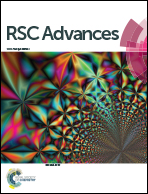Supercritical fluid assisted biotemplating synthesis of Si–O–C microspheres from microalgae for advanced Li-ion batteries†
Abstract
Silicon oxycarbide (Si–O–C) materials with high specific capacity are considered as a promising anodic material alternative to commercial graphite for advanced Li-ion batteries. However, the rapid capacity fading and poor rate performance are the main obstacles for practical application and still remain a large challenge. In this work, microalgae (Nannochloropsis) served as a biological template and carbon source to synthesize Si–O–C microspheres with the assistance of supercritical CO2 fluid. Compared to conventional artificial templates, microalgae is abundant, renewable and available, and can be regarded as a promising biological template. Meanwhile, supercritical CO2 fluid with high penetration, high diffusivity and high dissolving capacity can serve as a superior solvent to guarantee the efficient mass transfer and uniform dispersion of precursors. As anodic materials for Li-ion batteries, Si–O–C microspheres exhibit a high reversible specific capacity of 450 mA h g−1 at a current density of 0.1 A g−1 over 200 cycles, excellent rate cycling stability and high coulombic efficiency (100%). The discovery of this novel strategy to fabricate Si–O–C materials presents possibilities for energy storage applications.


 Please wait while we load your content...
Please wait while we load your content...